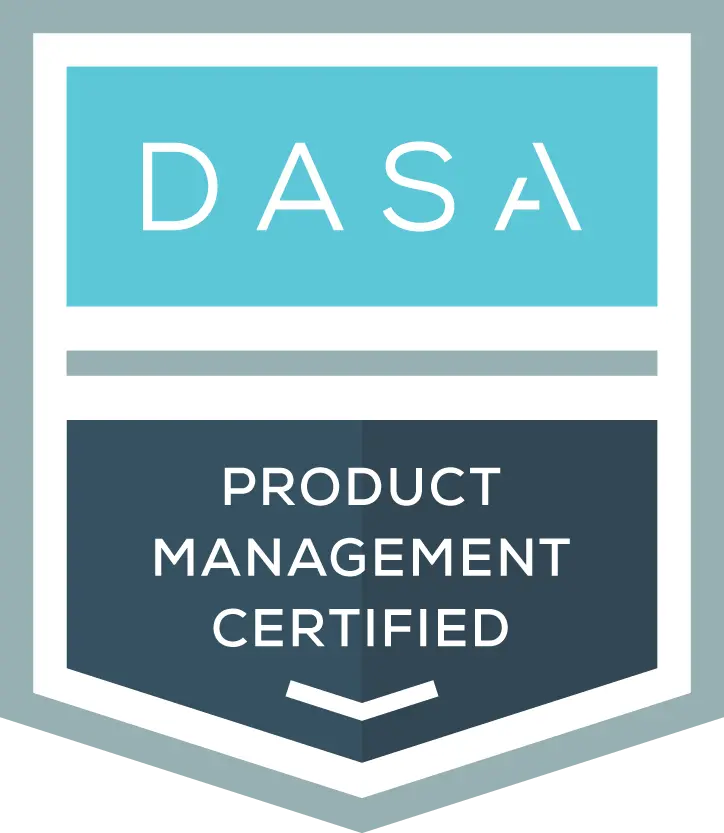Experience management is a proactive strategy aimed at collecting, analyzing, and acting on feedback to enhance the experiences of customers, employees, and all stakeholders with an organization’s products and services. It encompasses a broad range of activities, from surveys and data analysis to implementing changes based on insights gathered. This approach is designed to elevate satisfaction, engagement, usability, and overall performance, ensuring that every aspect of interaction with the organization is refined and optimized. By proactively seeking insights through experience management, teams can anticipate and cater to stakeholder needs even before new features are developed.
This blog explores how integrating experience management within DevOps practices offers a robust framework for not just understanding but also preemptively addressing the needs and expectations of users and stakeholders.
The Pillars of a Well-Managed Product Backlog
A product backlog is a prioritized collection of hypotheses, bugs, improvements, and feedback that guides teams to focus their efforts on making the most valuable changes to a product. Effective management of this backlog is critical to ensuring that development efforts are aligned with delivering the highest possible value. Through the lens of experience management, you can understand how prioritization, clarity, and adaptability are key to a well-managed product backlog.
- Prioritization is driven by the Impact, Effort, and Certainty (ICE) principle. This approach ensures that items are ordered to maximize impact while minimizing effort, with a high degree of confidence in both the assessment of effort and the anticipated impact. It’s not solely about what customers want; it involves a comprehensive understanding of the feedback from all stakeholders, including employees. This method helps in identifying which features, fixes, or improvements will truly enhance the product for all users, ensuring that development efforts are directed toward initiatives that offer the greatest overall benefit.
- Clarity is particularly crucial for items slated for immediate action. High-priority tasks need to be clearly defined to avoid misunderstandings and ensure that everyone, from developers to stakeholders, understands what’s being worked on and why. This transparency helps to build trust and aligns the team’s efforts with the broader objectives of the product. For items further down the list, a degree of ambiguity is acceptable, as these are subject to validation and refinement based on their prioritization.
- Adaptability is the ability to pivot quickly in response to new feedback, market changes, or insights from within the team. In moving away from a project-centric to a product-focused mindset, adaptability in the backlog ensures that the product can evolve without being derailed by shifts in direction. Regular communication with stakeholders and ongoing review and adjustment of the backlog items allow the team to remain agile, continuously delivering value in alignment with the evolving needs of the product and its users.
By prioritizing tasks that offer significant value, maintaining clarity around immediate next steps, and embracing the flexibility to adapt, development teams can ensure that their work consistently contributes to the meaningful evolution of the product.
Understanding Needs and Preferences
In product development, particularly within a DevOps context, it’s vital to grasp not just the immediate needs and preferences of users but also the broader implications and requirements of all stakeholders involved. This perspective expands far beyond the traditional focus on user features and functionalities; it encompasses a comprehensive understanding of the impact a product has on a wide array of participants and elements.
- User Experience (UX) is fundamental, but it’s more than just aesthetics or functionality. It’s about genuinely appreciating how users interact with the product, identifying their needs, and integrating these insights into every aspect of product design and development. However, this exploratory journey doesn’t stop with the end-user.
- Employee Experience (EX) is equally important. The development journey and the end product significantly affect teams. Are you ensuring that employees have a conducive work environment, the right tools, and adequate support? A positive and engaging work environment often translates into higher quality work, ultimately reflecting the excellence of the product.
Consideration must also extend to the ecosystem within which the product exists. This broad term includes the environmental impact, the regulatory landscape, and societal norms guiding operations. A deep understanding of these areas ensures that the product is not only innovative but also responsible and compliant with broader societal standards.
Further, the roles of suppliers, vendors, partners, and governing bodies cannot be overlooked. Each of these stakeholders brings unique needs and expectations to the table. From compliance with standards and regulations to synergies with partner products and services, navigating these requirements is critical for a seamless development process and successful product launch.
How Research Enables Insight Into Your Target Audience
Conducting thorough research is essential for DevOps professionals aiming to gain deep insights into their target audience. This process transcends the traditional focus solely on users, embracing a wider scope that includes all stakeholders interacting with the product or service. Through methods such as surveys, interviews, and user testing, valuable data can be gathered, shedding light on the multifaceted needs and preferences that inform product development.
- Surveys are a powerful tool for reaching a broad audience quickly. They can be tailored to gather quantitative data on specific aspects of the product experience, from usability to satisfaction levels across different stakeholder groups. This method allows for the collection of large volumes of data, providing a solid statistical foundation for decision-making.
- Interviews offer a more qualitative approach, enabling a deeper understanding of the motivations, thoughts, and feelings of the stakeholders. By engaging directly with individuals, whether they are users, employees, or partners, DevOps professionals can uncover nuanced insights that might not be evident through other research methods. This one-on-one interaction provides a unique opportunity to ask follow-up questions and explore complex topics in greater detail.
- User testing is another critical component of research, offering real-time feedback on how people interact with the product or service. This method can reveal usability issues, uncover areas for improvement, and highlight features that are particularly valuable to users and other stakeholders. User testing can range from formal, controlled settings to more casual, real-world usage scenarios, providing a comprehensive view of the product’s performance and its impact on the target audience.
It’s important to remember that research is a continuous, integral process that spans the entire product life cycle. As the market evolves and new trends emerge, continuous research ensures that the product remains relevant and meets the changing needs of all stakeholders involved. This should be a collaborative effort involving the whole team, to foster a shared understanding and identify the most effective solutions.
Aligning Product Value with User Experience
Aligning product value with the overall experience is a critical strategy for ensuring that products and services not only meet the immediate needs of users but also create sustainable value for all stakeholders involved, including employees, partners, and the broader community. A user-centric design approach, complemented by a strong value proposition, serves as the foundation for this strategy. By prioritizing features and functionalities that enhance usability, accessibility, and satisfaction, products can deliver experiences that resonate deeply with users and other stakeholders alike. Good products are built by harnessing the collaboration between Product, UX, and Tech teams. When discussing experience management, it’s important to elaborate on how this collaboration with UX impacts product management, emphasizing the integral role of seamless integration between these disciplines in crafting products that truly stand out.
However, the focus extends beyond the user to encompass the entire ecosystem surrounding the product. This involves considering the impact on employees, who are integral to the product’s development and support, and ensuring that their experiences and insights are valued and incorporated. Similarly, understanding the needs and expectations of partners and the community at large ensures that the product contributes positively to the ecosystem in which it operates.
Importance of Validation and Experience Management
The role of validation within experience management cannot be overstated, as it confirms the initiatives being pursued will produce the anticipated outcomes, and the efforts put into development will indeed resonate with and benefit the target audience. This involves a rigorous process of product discovery, focusing on the viability, usability, feasibility, and value of proposed changes. The practice of validation is supported by continuous feedback loops and testing, fundamental pillars for refining products and propelling their success forward. Within DevOps, the ability to swiftly adapt based on ongoing feedback is essential and this agility allows for prompt adjustments to user needs, market shifts, and new technological opportunities.
Experience management enhances this process by facilitating the collection and analysis of feedback from every point of interaction, perfectly aligning with the DevOps methodologies. Through the adoption of Agile principles, Product Management, Service Management, Site Reliability Engineering (SRE), and Value & Experience Management, DevOps professionals are equipped to implement a dynamic, customer-focused strategy in product development and service delivery. These practices converge to establish a comprehensive approach to DevOps, emphasizing constant enhancement, operational efficiency, and an unwavering commitment to delivering unmatched value.


DASA Product Management
Fosters a product-centric mindset through strategic alignment of product vision with business goals, market analysis, and lifecycle management.

